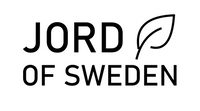Is organic cotton sustainable?

Is conventional cotton sustainable? No, it isn’t.
Is organic cotton better than conventional cotton? Yes.
Is organic cotton sustainable? Not necessarily.
Are clothes made with conventional cotton sustainable? No, they are not.
Are clothes made with organic cotton sustainable? For most of them, the answer is no.
Why is conventional cotton not sustainable?
There are two main reasons. The first concerns how conventional cotton agriculture is conducted. Large quantities of toxic and highly toxic synthetic chemicals are used on cotton fields, which would never be sustainable. The second main reason is growing cotton requires large amounts of water, in most cases irrigation water, and diverting rivers or constructing dams negatively affects habitats and downstream communities.
What is organic cotton?
Organic cotton is cotton that is cultivated with no synthetic fertilizers, and no synthetic chemicals (pesticides, insecticides, herbicides, defoliants, fungicides, rodenticides) and does not use genetically modified seeds.
Organic cultivation does allow for the use of natural pesticides. (Eyhorn, 2005)

Is organic cotton sustainable?
We have just mentioned the cultivation of organic cotton does not use synthetic chemicals, isn’t that enough to make it sustainable? Unfortunately, it’s not. Besides the exclusion of synthetic chemicals (e.g. pesticides), organic cotton agriculture can potentially have many of the same sustainability issues as conventional cotton.
The two main sustainability issues of cotton agriculture are the use of toxic chemicals, such as synthetic pesticides, and the consumption of large amounts of fresh water. Organic cotton addresses the first issue since it is cultivated without synthetic chemicals. However, cotton agriculture—whether organic or conventional—requires large amounts water, which in most cases is irrigation water, an unsustainable source (IEEP, 2005, p. 120)

Additionally, it is common practice in cotton agriculture—both organic and conventional—to burn weeds and cotton stalks after harvest (Kooistra et al., 2006). Burning organic matter contributes to increasing atmospheric content of greenhouse gases through carbon dioxide (CO2) emissions.
The use of natural fertilizers, besides supplying nutrients to the crop, increases soil organic matter, which in turn stimulates soil biological processes, soil structure, root penetrability and water retention (Kooistra et al., 2006). However, to prevent long-term soil degradation—in addition to using natural fertilizers—crop rotation is necessary, but just because cotton farming is organic does not ensure this happens.
Changes in land use are not considered by organic cotton certification agencies either. If establishing organic cotton fields requires deforestation, with its associated loss of biodiversity, it would not be sustainable.
Are there areas where organic cotton is rain-fed? Quite a few. Roughly half of the world’s cotton fields are rain-fed, the other half are irrigated (Clay, 2013, p. 287). Examples can be found in central and south India, parts of Turkey and Brazil.
Are there areas where cotton stalks are not burnt after harvest? Yes, there are (Lu et al., 2010, p. 96). In the US it is common to leave them on the field, whereas in Brazil cotton stalks are also left on the field, but weeds are burnt (Kooistra, 2006).

Are there areas where no deforestation occurred? Certainly, and examples are found in parts of China, India, Pakistan, Turkey or the US.
Are there places where organic cotton is rotated with other crops to maintain soil fertility? Yes, China and Pakistan tend to rotate cotton and wheat annually. In Brazil it’s common to rotate with soy-bean (Kooistra, 2006). And the same is true in some fields in India and West Africa, among other places (Lakhal et al., 2008).
In summary, for organic cotton to be environmentally sustainable, it should be grown in rain-fed areas with no deforestation involved; it needs to minimize greenhouse gas emissions, so burning weeds and stalks should be replaced by composting; and it needs to prevent soil erosion by rotating crops, even if that means growing less profitable crops than cotton.
Until now we have only considered environmental aspects of sustainability, such as human and environmental toxicity, water use, soil degradation and deforestation. However, for organic cotton agriculture to contribute to sustainability, it needs to address potential social sustainability issues such as child labor, working hours, wages and discrimination, among others.
Would it be possible to find cotton farms where all the sustainability conditions are simultaneously met? We cannot rule out that possibility, but they—if any—would be a minority. Environmentally sustainable organic cotton is not the norm. Adding the social aspects of sustainability as a requirement reduces the likelihood even further.
Why are clothes made with conventional cotton not sustainable?
Since conventional cotton is not sustainable, no material made of conventional cotton would be sustainable.
Are clothes made with organic cotton sustainable?
We have already covered that the only thing we can confidently say about organic cotton is that it is organic, full stop. Organic cotton is not necessarily sustainable. Those words are not interchangeable. And even when organic cotton is cultivated sustainably, the supply chain from harvested cotton to cotton fabric suffers many sustainability issues.
After harvesting, cotton typically goes through ginning, spinning, a pre-treatment (singeing, desizing, scouring, bleaching, and mercerizing are common for woven fabrics, whereas for knitted fabrics scouring, bleaching and alkali decrement may take place), then dyeing and finishing (Siddique, 2017, p. 184; Testex, 2022).
Spinning consumes a great deal of electricity and if that energy is not from a renewable source, then the spinning process cannot be regarded as sustainable.
Pre-treatment processes such as scoring or mercerization use sodium hydroxide aqueous solutions, which is an environmental concern if released back to the environment untreated.
The dyeing step requires energy to warm up the water bath to temperatures in the 70 to 90 °C range and the use of pigments and synthetical chemical reagents that facilitate pigment absorption on the fibers, which in many cases are toxic.
The finishing step may involve the use of softeners and other chemicals such as formaldehyde (typically added for easy-ironing), optical brightening agents (OBA), ammonia and polyvinyl chloride for anti-pilling, among others (Visionlinens, 2021).
Since the complete removal of dyes and the other chemicals used in the production process from the textile wastewater is often very costly (Siddique, 2017, p. 201), there is a high risk for wastewater contamination, which in turn contaminates rivers and make water unfit for human and animal consumption (Vandevivere, 1998).
Summary
Obviously, there may be cotton fields that observe the principles of sustainability and fabric-making processes that exclusively use organic pigments and no chemicals, but those are the exception and not the norm. Finding sustainable cotton garments is a great challenge. Unfortunately, it may be almost impossible since retailers rarely disclose the information that would allow for full traceability and process transparency.
References
Clay, J., 2013. World agriculture and the environment: a commodity-by-commodity guide to impacts and practices. Island Press.
Eyhorn, F., Ratter, S.G., Ramakrishnan, M. 2005. Organic cotton crop guide. Research Institute of Organic Agriculture FiBL, Switzerland.
https://orgprints.org/9250/2/eyhorn-etal-2005-cotton-guide_small-version.pdf
IEEP. 2005. The environmental impacts of trade liberalization and potential flanking measures.
Faze I Defra report.
https://ieep.eu/uploads/articles/attachments/371e4612-7619-47d1-8d3b-327fb909c169/IEEP_GHK_part_1.pdf
Kooistra, K.J., Termorshuizen, A.J. and Pyburn, R., 2006. The sustainability of cotton: Consequences for man and environment (No. 223). Science Shop Wageningen UR.
https://library.wur.nl/WebQuery/wurpubs/fulltext/17214
Lakhal, S.Y., Sidibé, H. and H'Mida, S., 2008. Comparing conventional and certified organic cotton supply chains: the case of Mali. International journal of agricultural resources, governance and ecology, 7(3), pp.243-255.
https://citeseerx.ist.psu.edu/viewdoc/download?doi=10.1.1.522.2436&rep=rep1&type=pdf
Lu, P., Davis, R.F. and Kemerait, R.C., 2010. Effect of mowing cotton stalks and preventing plant re-growth on post-harvest reproduction of Meloidogyne incognita. Journal of Nematology, 42(2), pp.96-100.
https://www.ncbi.nlm.nih.gov/pmc/articles/PMC3380473/
Siddique, K., Rizwan, M., Shahid, M.J., Ali, S., Ahmad, R. and Rizvi, H., 2017. Textile wastewater treatment options: a critical review. Enhancing cleanup of environmental pollutants, pp.183-207.
https://www.researchgate.net/profile/Shafaqat-Ali/publication/317104152_Textile_Wastewater_Treatment_Options_A_Critical_Review/links/59e2bfb60f7e9b97fbe770b6/Textile-Wastewater-Treatment-Options-A-Critical-Review.pdf
Testex, 2022. https://www.testextextile.com/textile-pretreatment-processes-singeing-desizing-scouring-bleaching-mercerizing/
Vandevivere, P.C., Bianchi, R. and Verstraete, W., 1998. Treatment and reuse of wastewater from the textile wet‐processing industry: Review of emerging technologies. Journal of Chemical Technology & Biotechnology: International Research in Process, Environmental AND Clean Technology, 72(4), pp.289-302.
Visionlinens, 2021. https://www.visionlinens.com/blog/cotton-fabric-manufacturing-part-5-the-finishing-process






Leave a comment